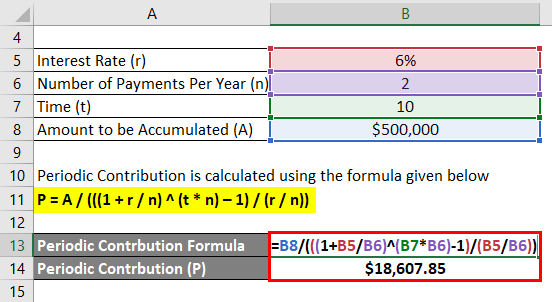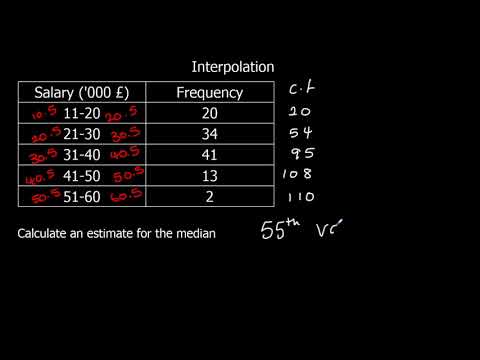

Furthermore, the information recorded in General Ledger is divided based on the type of accounts. Thus, your Sales Ledger tracks detailed information about goods sold to your customers. This equation states that the assets of your business are always equal to the sum of the owner’s capital and the claims of the outsiders. This means you first need to record a business transaction in your Journal. Remember, you need to record each of them in Journal in the order in which they occur.
- Harold Averkamp has worked as a university accounting instructor, accountant, and consultant for more than 25 years.
- Adjusting entries for accrued expenses and deferred revenue must eventually be reversed to avoid misstating your financial position.
- You can quickly select which topic you are interested in by selecting it from the list, or you can scroll down the page to view the entire table of contents.
- The example shows the electricity expense account which is on page 21 of the ledger.
Goal is to come up with single harmonized Chart of accounts in Central Finance system. It is important to have one or more specialists who oversee all GL Coding options as everyone in the organization has to use a standardized GL Code for the data to be accurate. Let’s look at a few scenarios that will require changes to the GL Coding String. In the above example, you can see the GL Code strings are the exact same length but give very different information.
Types of general ledger examples
These categories stay in place, regardless of the business’s accounting method. By preparing a trial balance, you make sure your accounting is correct before creating financial statements for the accounting period in question. The trial balance tallies all your debits and credits for the accounting period and makes sure they match up. The next step in the general ledger and financial reporting cycle is to prepare an unadjusted trial balance.

I’m conducting a general ledger reconciliation for a sample company that uses QuickBooks Online. I matched the company’s cash account balance as of September 30, 2020, to the October general ledger’s opening balance. Hire an accountant or bookkeeper, or learn how to set up the chart of accounts and classifications for your company’s accounting system. For example, the accounts payable general ledger account may use information from a purchase’s sub-ledger account. Separating purchases provides more detail and makes it easier to review account activity. And your bookkeeper can always walk you through your GL if you have questions.
General ledger
A trial balance is an internal report that lists each account name and balance documented within the general ledger. It provides a quick overview of which accounts have credit and debit balances to ensure that the general ledger is balanced faster than combing through every page of the general ledger. You can prepare financial statements once you have verified the accuracy of your ledger accounts. All General Ledger accounts can be classified into five categories.

That is the most time consuming part but the ultimate convenience of the GL Code will far outweigh the initial inconvenience. You have undergone the exhausting task of deciding what information your GL Code String will capture, the format, and how all of your existing information will be coded. You begin applying your code to all transactions and everything is working wonderfully. Your data is eye-opening, your finances have never looked more organized. Can we assign dunning procedures to either customer or company code….
Balance Sheet
In this tutorial we going to demonstrate creation of general accounts centrally, that is company code and chart of accounts segments created at once. We will explain the function of each and every field when creating a general ledger centrally. The transaction code for maintaining general ledger master records centrally is FS00. Temporary accounts — revenues and expenses — start at zero at the beginning of every period. Accounting software can automatically prepare closing entries at the end of each accounting period, zeroing out revenues and expenses for a fresh start in the upcoming period.
- The same transaction gets written down in another book called the “general ledger,” which keeps a running balance of every account.
- Current liabilities can include things like employee salaries and taxes, and future liabilities can include things like bank loans or lines of credit, and mortgages or leases.
- You can think of an account as a notebook filled withbusiness transactionsfrom a specific account, so the cash notebook would have records of all the business transactions involving cash.
- He purchased furniture, including shelves, a counter desk, and other equipment for the store for $15,000.
- This shareable template is the perfect tool to help you meet your budget-balancing goals.
Obotu has 2+years of professional experience in the business and finance sector. Her expertise lies in marketing, economics, finance, biology, and literature. She enjoys writing in these fields to educate and share her wealth of knowledge and experience.
Control Accounts
It helps get the detailed breakdown of daily financial transactions occurring in a business, which can be used for various types of statistical analysis. For financial decision-making, such compilation is of utmost importance. Accounting RulesAccounting rules are guidelines to follow for registering daily transactions in the entity book through the double-entry system. Here, every transaction must have at least 2 accounts , with one being debited & the other being credited.
Therefore, you need to prepare various sub-ledgers providing the requisite details to prepare a single ledger termed as General Ledger. General Ledger is a principal book that records all the accounts of your company. Furthermore, all the accounting entries are transferred from the Journal to the Ledger. Then, the balance of each of the General Ledger Accounts is posted in your Trial Balance Sheet. Once you complete the Trial Balance, the account balance is finally entered in the income statement and the balance sheet.
DividendDividends refer to the portion of business earnings paid to the shareholders as gratitude for investing in the company’s equity. You are required to passJournal Entry, prepare General Ledger and Trial Balance. A business budget is a plan of expenses that a business estimates it will spend every month.
But, you can refer to the related subsidiary https://1investing.in/ if you need to check any detail regarding the sales made to a specific customer. In other words, you get a clear view of your business’s capacity to generate profits and the resources you have to meet outsider’s claims. Thus, a purchase ledger helps you to keep a track of the purchases your business entity makes. This way you can make sure that you have enough purchases for the smooth manufacturing of the products. David Baker wants to start a forging factory, where he can manufacture high-quality chef and military knives. On January 1, 2018, he invested a sum of $1,000,000 as capital and started The Damascus Forging Works.
How to Record a Depreciation Journal Entry: Step By Step – The Motley Fool
How to Record a Depreciation Journal Entry: Step By Step.
Posted: Fri, 05 Aug 2022 07:00:00 GMT [source]
For instance, accounting equation activity is usually recorded in the cash receipts journal. The account details can then be posted to the cash subsidiary ledger for management to analyze before it gets posted to the general ledger for reporting purposes. As you can see, columns are used for the account numbers, account titles, and debit or credit balances. Thedebitand credit format makes the ledger look similar to a trial balance. Other ledger formats list individual transaction details along with account balances.
Write-Offs: Understanding Different Types To Save on Taxes – Investopedia
Write-Offs: Understanding Different Types To Save on Taxes.
Posted: Sun, 26 Mar 2017 00:06:37 GMT [source]
Think of your general ledger as growing the wheat before you make the bread that is your financial statements. It provides bookkeepers with the information they need to generate any reports. If you decide to research double-entry bookkeeping, you’ll probably come across the term “trial balance” often. Trial balances are a financial tool specific to double-entry bookkeeping.
Debit BalanceIn a General Ledger, when the total credit entries are less than the total number of debit entries, it refers to a debit balance. A debit balance is a net amount often calculated as debit minus credit in the General Ledger after recording every transaction. Reconciliation is an accounting process that compares two sets of records to check that figures are correct, and can be used for personal or business reconciliations. Accruals are revenues earned or expenses incurred which impact a company’s net income, although cash has not yet exchanged hands.

